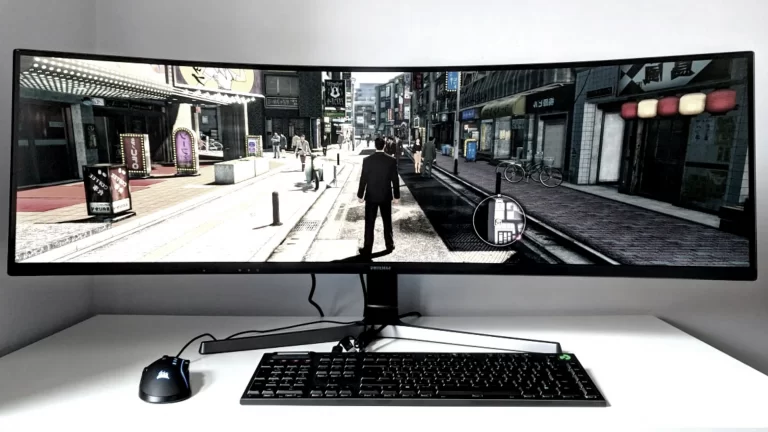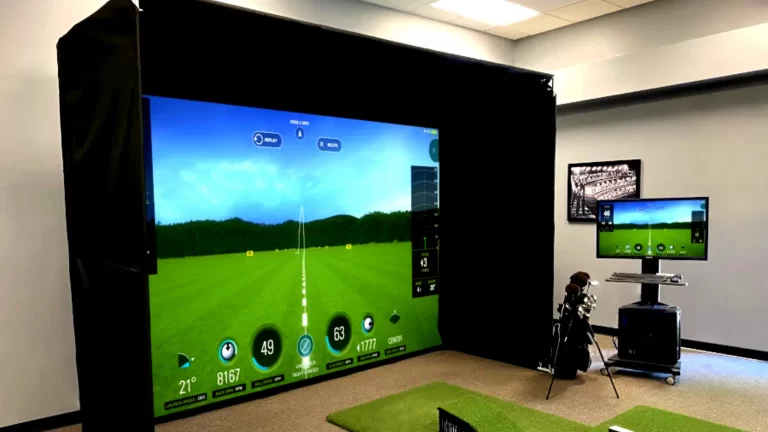Gaming Monitors vs. Regular Monitors: What’s The Difference?
PC gaming is a very popular pastime that has been around for many years now, and during this time, monitors have changed to match the type of graphics games used.
Today, you’ll find gaming and regular monitors in use among those who play PC games. In this article, we will look at some of the differences between these gaming monitors and regular monitors to decide which would be more beneficial for your use case.
What is a gaming monitor?

A gaming monitor is a special type of monitor designed for use in PC gaming. They have a higher resolution than regular monitors, making them ideal for detailed graphics and gameplay.
Gaming monitors also have features that allow you to customize your gaming experiences, such as color calibration and response time.
Regular monitors are not designed specifically for gaming but can be used to watch movies or TV shows or work on documents.
They don’t have the same features as gaming monitors, so you may not be able to get the best experience when playing games on a regular monitor.
The main difference between gaming monitors and regular monitors is the resolution. Gaming monitors typically have a higher resolution than regular monitors, which makes details in graphics and gameplay more visible.
Response time is also important for gaming, as it allows the monitor to react quickly to movements on the screen.
A gaming monitor is a perfect choice if you’re looking for a high-quality monitor to help you enjoy your favorite games.
Why should you get a gaming monitor?
Gaming monitors are specialized monitors designed specifically for gaming. They have features that make them better suited for gaming than regular monitors, such as higher resolutions and refresh rates.
One major difference between gaming monitors and regular monitors is resolution. Gaming monitors typically have higher resolutions than regular monitors, which makes graphics appear smoother and more detailed. Higher resolutions also allow for more detailed textures on the screen, making games more realistic.
Another major difference between gaming monitors and regular monitors is the refresh rate. Gaming monitors typically have higher refresh rates than regular monitors, which allows the screen to update faster when you’re playing a game. This means that you won’t have to wait around for the screen to update before you can react to what’s happening on the screen.
Gaming monitors are a great investment if you’re a fan of video games. They offer better-quality graphics and faster response times than standard monitors, making them ideal for serious gamers.
How to Choose the Best Monitor for Gaming
One of the most important decisions when it comes to gaming is choosing the right monitor. The best monitors for gaming vary greatly in terms of features, price, and portability. In this article, we will compare gaming monitors and discuss their differences.
What are the Differences between Gaming Monitors and Regular Monitors?
The main difference between gaming and regular monitors is that gaming monitors typically have a higher resolution and more features than regular monitors.
They also offer a wider range of colors and better viewing angles. Some gaming monitors also include features like FreeSync or G-Sync for smoother, tear-free gameplay.
What Should I Consider When Choosing a Gaming Monitor?
There are a lot of factors to consider when choosing a gaming monitor, including your budget, requirements, and preferences. Here are some things to keep in mind:
Your Budget:
Gaming monitors range from affordable options with basic features to more expensive models with extra features and better resolution.
Requirements:
Some gamers only need a basic monitor for basic tasks like watching movies or browsing the internet, while others require a high-end monitor that offers superior resolution and color accuracy for gaming. Your Preferences: Some people prefer large displays
What are the most important features of a gaming monitor?
One of the most important features of a gaming monitor is its resolution. A higher resolution allows for sharper graphics and more detailed images. Other important features include refresh rate, response time, and color gamut.
Conclusion
When it comes to choosing a gaming monitor, there are a few factors you should consider. First and foremost, you’ll want to ensure that the monitor is large enough to fit your needs. Some games require an HD display for players to see the graphics clearly, so be sure to pick a monitor at least 21 inches wide.
Second, you’ll want to decide whether you want an ultrawide or regular display. Ultrawide offers more viewing angles than regular monitors and can be helpful if you frequently share your computer with other people.
Third, think about how much money you’re willing to spend. A higher-end gaming monitor will cost more than a lower-end model, but it may also offer better features, such as faster response times and better image quality.
Finally, consider your budget and which features are most important to you. If price is not an issue and image quality is paramount, go for a high-end model; if the price is a top priority but speed isn’t as important, choose a lower-end model.
With these tips in mind, it should be easier for you to make the perfect choice for your next gaming monitor!




